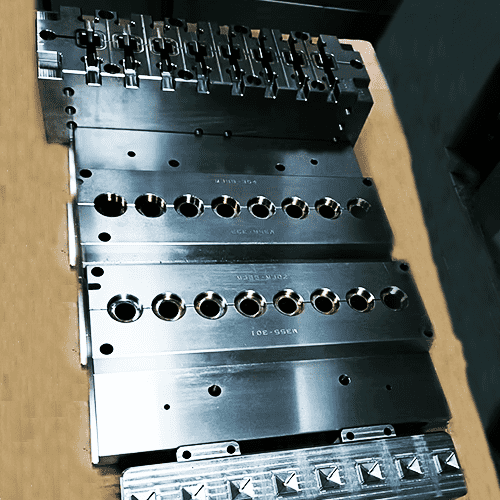What Are the Main Aspects of Precision in Die Accessories Processing?
With the rapid development of the construction industry, the precision requirements for mold components in the mold industry are increasing. Enhancing the precision of mold components is crucial for improving the effectiveness of molds and the quality of products. So, what are the key indicators of mold component machining precision? Here is a detailed introduction provided by HaiRong Precision:
The precision of mold component machining mainly includes three aspects: dimensional precision, shape precision, and positional precision. Dimensional precision refers to the degree of matching between the actual size of the part after machining and the center of the tolerance band. Shape precision focuses on the consistency between the actual geometric shape of the part after machining and the design requirements, such as roundness, cylindrical shape, flatness, conical shape, and straightness. Positional precision involves the accuracy of the relative positions between parts, including parallelism, perpendicularity, coaxiality, and symmetry.The evaluation of machining precision is based on the consistency between the actual dimensions, shape, and position of the part and the ideal geometric parameters specified in the design drawings. Ideal geometric parameters include target dimensions, absolute geometric shapes, and precise relative positions. The difference between actual geometric parameters and ideal parameters is called machining error.

Regardless of the machining method used, achieving absolute accuracy in the actual parameters is challenging. As long as the machining errors are within the tolerance range specified in the design drawings, the machining precision is considered acceptable. The overall quality of the mold depends not only on the quality of the component machining but also on the quality of the mold assembly. The quality of the component machining includes both the machining precision and surface quality of mold components. Mechanical machining precision reflects the degree to which the actual geometric parameters (dimensions, shape, and position) of the part match the ideal geometric parameters. The size of machining errors directly affects the level of machining precision; smaller errors indicate higher precision.

To improve the precision of mold component machining, companies often use advanced machining equipment and technology, such as CNC machine tools and laser measuring instruments. Additionally, implementing a rigorous quality control system is key to ensuring machining precision. By regularly calibrating equipment, monitoring various indicators during the machining process, and conducting comprehensive quality inspections, companies can effectively control machining errors and enhance product consistency and reliability.It is important to note that the precision of mold components not only affects the performance of the mold but also has a significant impact on the quality of the final product. High-precision molds better meet design requirements, reduce the rate of defects during production, and improve production efficiency. Therefore, investing in high-precision machining technology and quality management is not only essential for enhancing the quality of mold components but also a key factor in improving the competitiveness of enterprises.

In summary, high-precision mold products depend on higher precision mold components. By improving the machining precision of mold components, companies can ensure that the mold components produce higher quality products. This not only helps enhance the effectiveness of molds but also provides end-users with a better product experience.
precision machining services high precision machining services precision machine service


